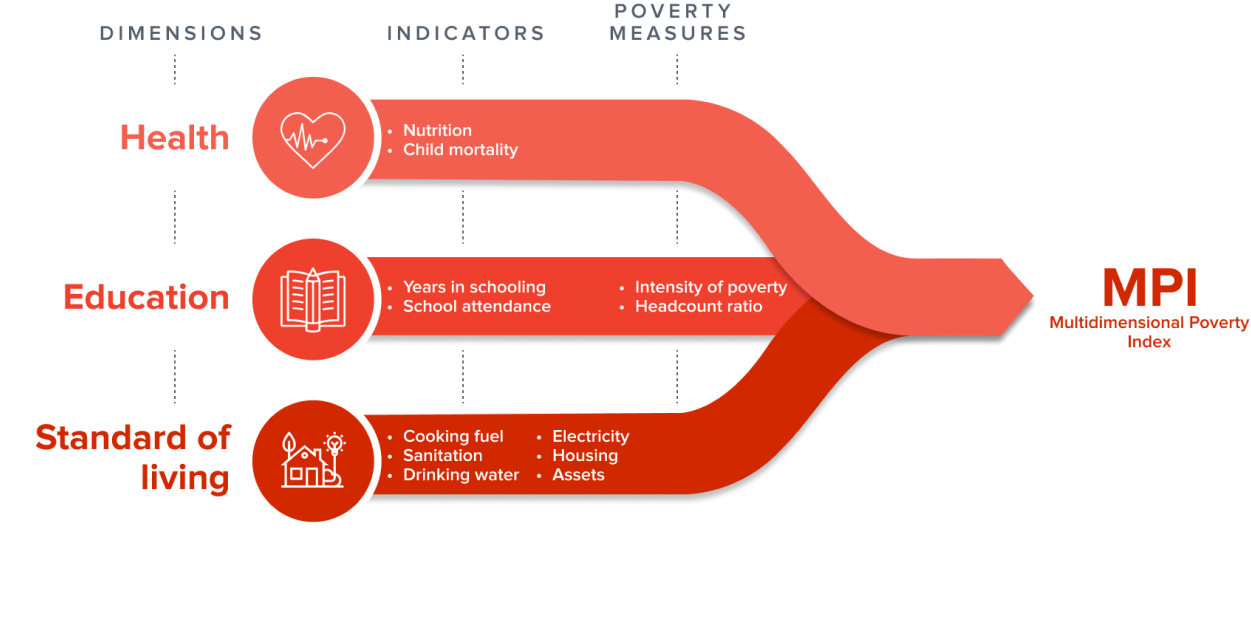MULTIDIMENSIONAL POVERTY INDEX
The MPI is scored on a scale of 0 to 1, with 0 indicating no poverty and 1 indicating extreme poverty. A person is considered multidimensionally poor if they experience at least 33% of deprivations in the 10 dimensions.
The MPI was developed by the Oxford Poverty and Human Development Initiative (OPHI) and is now used by the United Nations Development Programme (UNDP) to track progress on multidimensional poverty reduction. The MPI is a valuable tool for understanding the nature of poverty and for designing policies that can effectively reduce it.
-
Health: This dimension considers indicators such as nutrition, child mortality, and access to clean water and sanitation.
-
Education: It looks at indicators like years of schooling and school attendance rates for children.
-
Standard of living: This dimension considers access to basic services like electricity, cooking fuel, and adequate housing.

- India still has more than 230 million people who are poor
- According to the MDI report, one should take the population “vulnerable” to multidimensional poverty seriously
- The UNDP defines, “Vulnerability — the share of people who are not poor but have deprivations in 20–33.3 percent of all weighted indicators — can be much higher.” India has some 18.7 per cent population under this category.
- Globally, 1.1 billion people, or around 18 per cent of total population, are acutely multidimensionally poor.
- Children under 18 years old account for half of MPI-poor people (566 million). The poverty rate among children is 27.7 per cent, while among adults it is 13.4 per cent
- 1.1 billion people in 110 developing countries are multidimensionally poor.
- The number of multidimensionally poor people has fallen by 220 million since 1990.
- The incidence of multidimensional poverty is highest in Sub-Saharan Africa and South Asia.
- Children are disproportionately affected by multidimensional poverty.
- Women are more likely to be multi-dimensionally poor than men.
|
For Prelims: Multidimensional poverty index, UNDP, Education, Health, Standard of Living
For Mains: Multidimensional poverty index
|
|
Previous year Questions
1.The Multi-dimensional Poverty Index developed by Oxford Poverty and Human Development Initiative with UNDP support covers which of the following? (UPSC CSE 2012)
Select the correct answer using the codes given below: (a) 1 only Answer - a 1.Despite Consistent experience of high growth, India still goes with the lowest indicators of human development. Examine the issues that make balanced and inclusive development elusive. (UPSC CSE 2016) |




